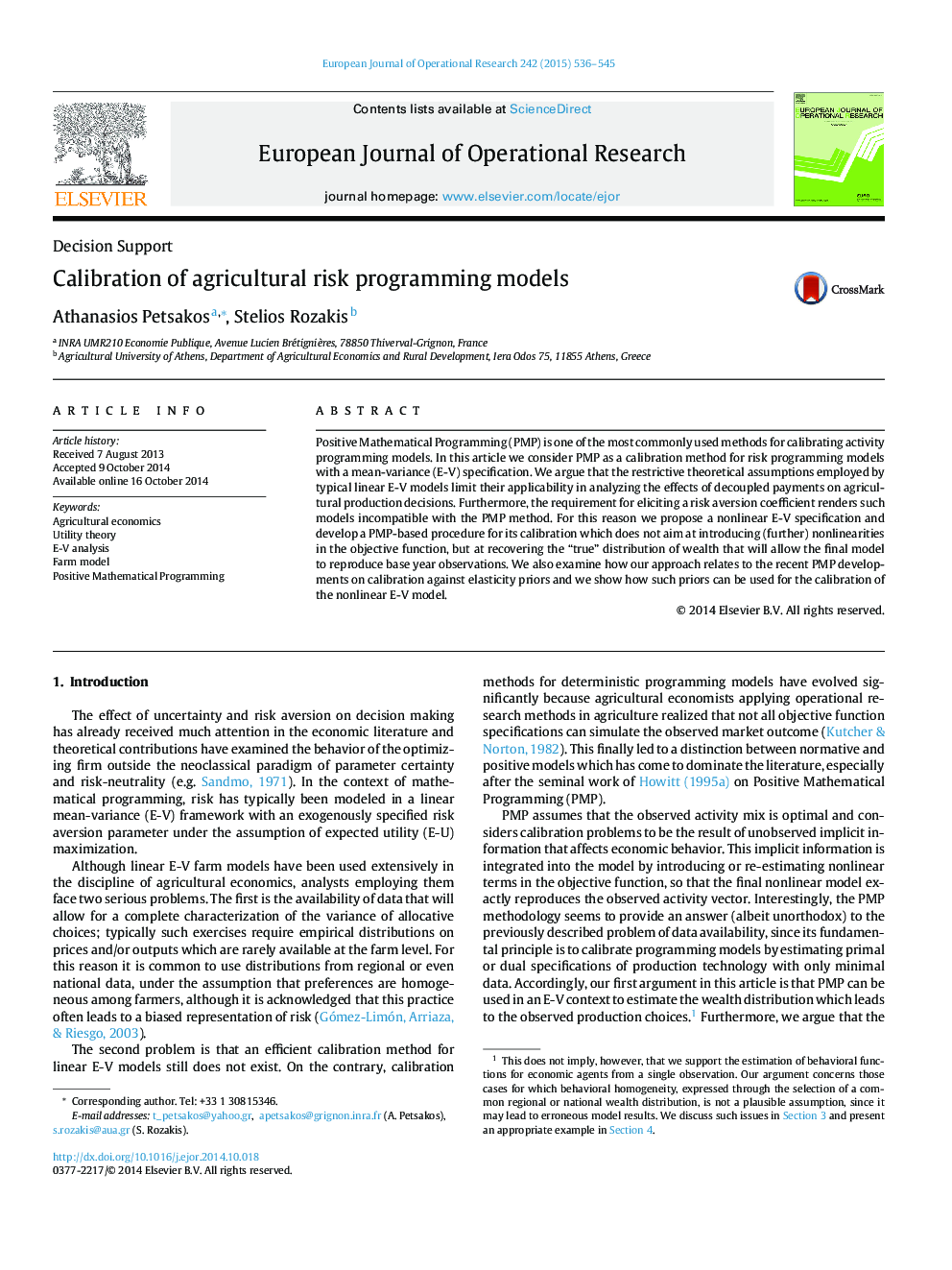| Article ID | Journal | Published Year | Pages | File Type |
|---|---|---|---|---|
| 479692 | European Journal of Operational Research | 2015 | 10 Pages |
•We show how risk programming models can be calibrated with Positive Mathematical Programming (PMP).•Typical linear mean-variance models are incompatible with the PMP algorithm.•We examine how supply elasticity priors can be used with PMP for calibrating a risk programming model.•Nonlinear mean-variance models are suitable for agricultural policy analysis.
Positive Mathematical Programming (PMP) is one of the most commonly used methods for calibrating activity programming models. In this article we consider PMP as a calibration method for risk programming models with a mean-variance (E-V) specification. We argue that the restrictive theoretical assumptions employed by typical linear E-V models limit their applicability in analyzing the effects of decoupled payments on agricultural production decisions. Furthermore, the requirement for eliciting a risk aversion coefficient renders such models incompatible with the PMP method. For this reason we propose a nonlinear E-V specification and develop a PMP-based procedure for its calibration which does not aim at introducing (further) nonlinearities in the objective function, but at recovering the “true” distribution of wealth that will allow the final model to reproduce base year observations. We also examine how our approach relates to the recent PMP developments on calibration against elasticity priors and we show how such priors can be used for the calibration of the nonlinear E-V model.
